The Specialties: WICK DRAINS - PREFABRICATED VERTICAL DRAIN - PAPER DRAINS
WICK DRAINS INSTALLATION BY FS OVER BACKFILLED FORMER FISHPONDS, AT MANILA INTERNATIONAL AIRPORT FOR THE EXTENSION OF RUNWAY AND TAXIWAY. 1980s
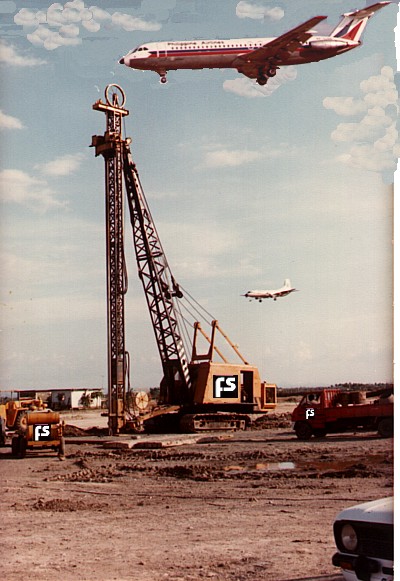
INSTALLATION OF PAPER DRAINS WICK DRAINS BY FS AT THE CONTAINERSHIP PORT OF CEBU FOR THE WORLD BANK FINANCED DPWH-PPA FOUR COMMERCIAL PORTS 1980s
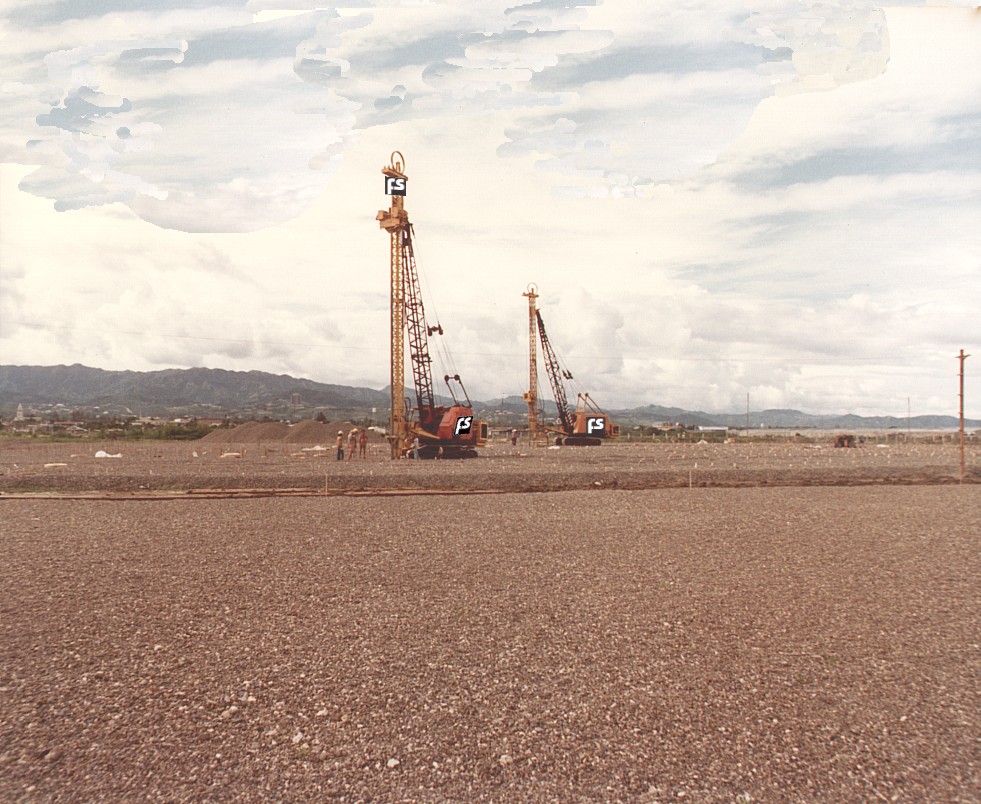
WORKERS CUTTING THE TOP END OF A WICK DRAIN & FIXING THE PLATE ANCHOR ON THE NEXT DRAIN TO BE INSTALLED [Cebu Containership Port Project]
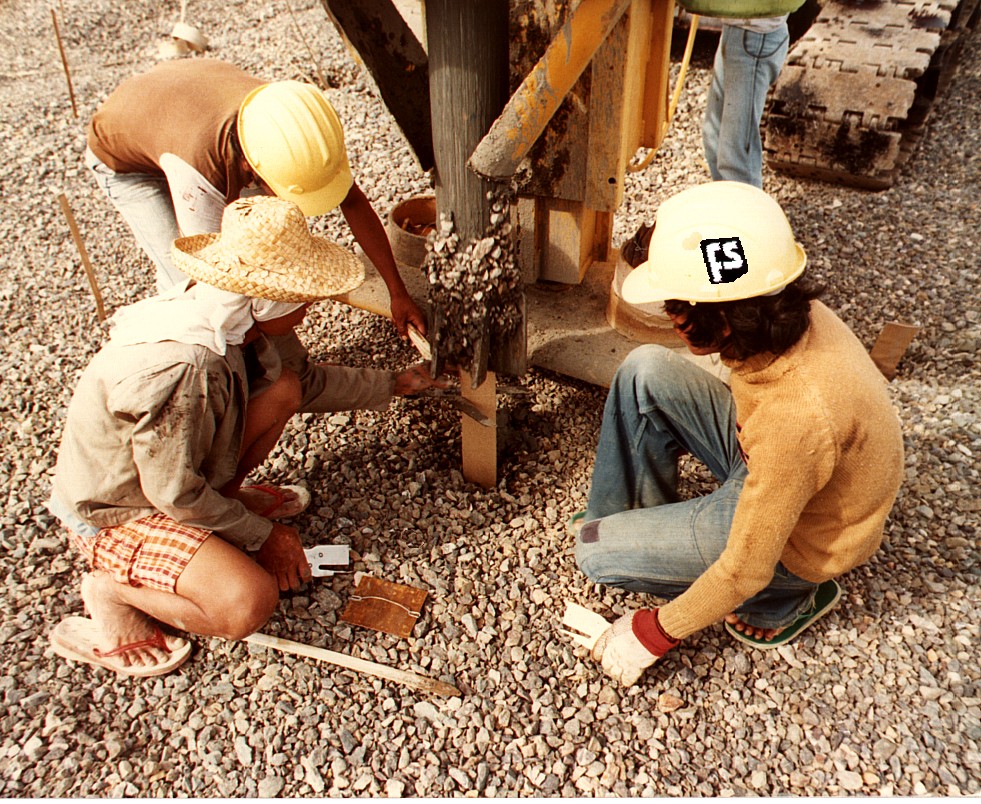
WICK DRAIN INSTALLED AT THE RUNWAY EXTENSION OF MIA, REMOVING ALREADY WATER FROM THE UNDERLAIN SOIL
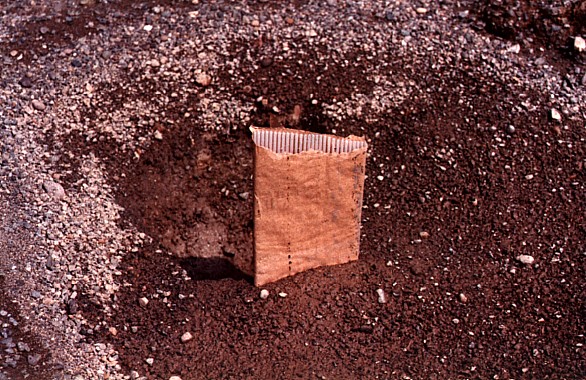
BRAINS BEING INSTALLED BY FS AT THE DAGAT DAFGATAN HOUSING PROJECT SITE
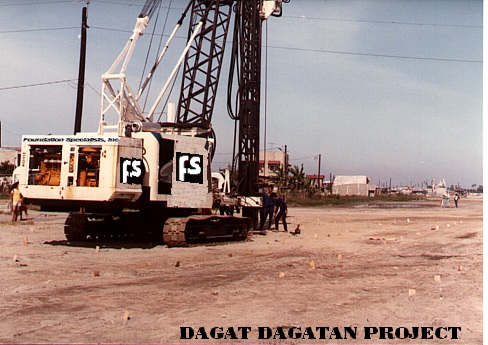
WICK DRAIND 17 m deep BEING INSTALLED BY FS AT THE RAMP LOCATION OF THE NEW DEL PAN BRIDGE, MANILA
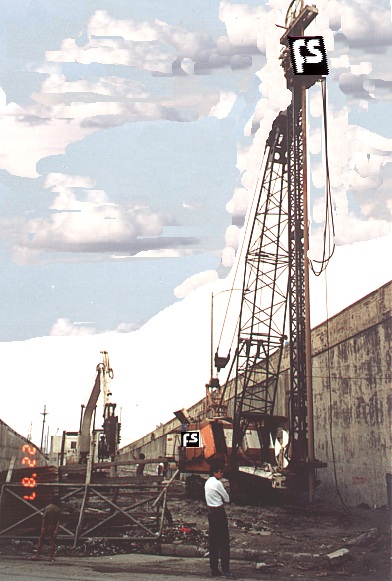
33 m long VERTICAL WICK DRAIN BEING INSTALLED BY FS AT THE NEW SEA-BEES CAMP IN SUBIC US NAVY BASE
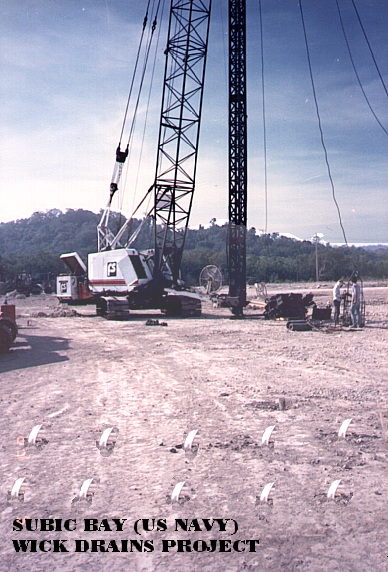
The Specialties: WICK DRAINS - PREFABRICATED VERTICAL DRAIN - PAPER DRAINS
Standard Wick drains are prefabricated drains indefinitely long, 100 mm wide and 4 to 5 mm thick, made of two components, an outer filter fabric sleeve with high stretch and tear resistance and permeability suited for long draining performance in clay and silt formations, and a inner polyethylene or polypropylene grooved, band-shaped core, designed with the double purpose of keeping the filter sleeve open and to provide an open vertical conduit for the removal of water “squeezed” out of the soil formations to be consolidated.
Sand Drains at times called sand piles are cylindrically shaped, formed “in situ”, vertical drains made by pouring clean well graded sand into vertical holes executed in the soil (clay and silt) formation to be consolidated. Installation is done in accordance with design pattern. Sand Drains’ common diameters generally range from 300 to 400 mm and the length of each sand drain ranges from few meters to 30 and more meters, depending upon the thickness of the soil strata to be consolidated.
Foundation Specialists, inc. [FS ] is engaged in the design and installation of wick drains and sand drains for soil consolidation. FS has designed and installed wick drains for soil consolidation since the middle nineteen seventies, when wick drains were still called “paper drains” [the outer sleeve was actually made with paper specially treated to resist humic acids action ].
Wick drains and sand drains installed in regular pattern at close distance from each other provide vertical preferential way-out for the water that the applied (pre)load forces out of water saturated low permeability soil formations.
Temporary surcharge loads with weight in excess of load bearing capacity requirements for the land to be consolidated , in combination with vertical drains installed with depth and spacing in accordance with design patterns determined by the original soil parameters, are employed to achieve soil consolidation to the required values in periods usually ranging from 6 months to one year.
Without properly designed and installed vertical drains, the natural process of consolidation of water saturated clay formations subjected to preloading, would, generally require decades or centuries to happen. In fact the extremely low permeability of clay, would not permit the fast release of pore water from the soil formation simply because the water itself would have to travel a long way through the nearly impervious soil existing in all directions, in order to exit the cohesive soil formation. The presence of properly designed and installed vertical drains (wick drains, sand drains) would create closely spaced grids of collector drains through which the pore water squeezed out of the soil formation (by the applied “pre-load”) could “escape” to the surface, and, through the horizontal draining mat (sand mat) provided at G.L., reach the surface drainage grid provided by design, like the sand mat, as standard procedure for soil consolidation schemes using vertical drains.
